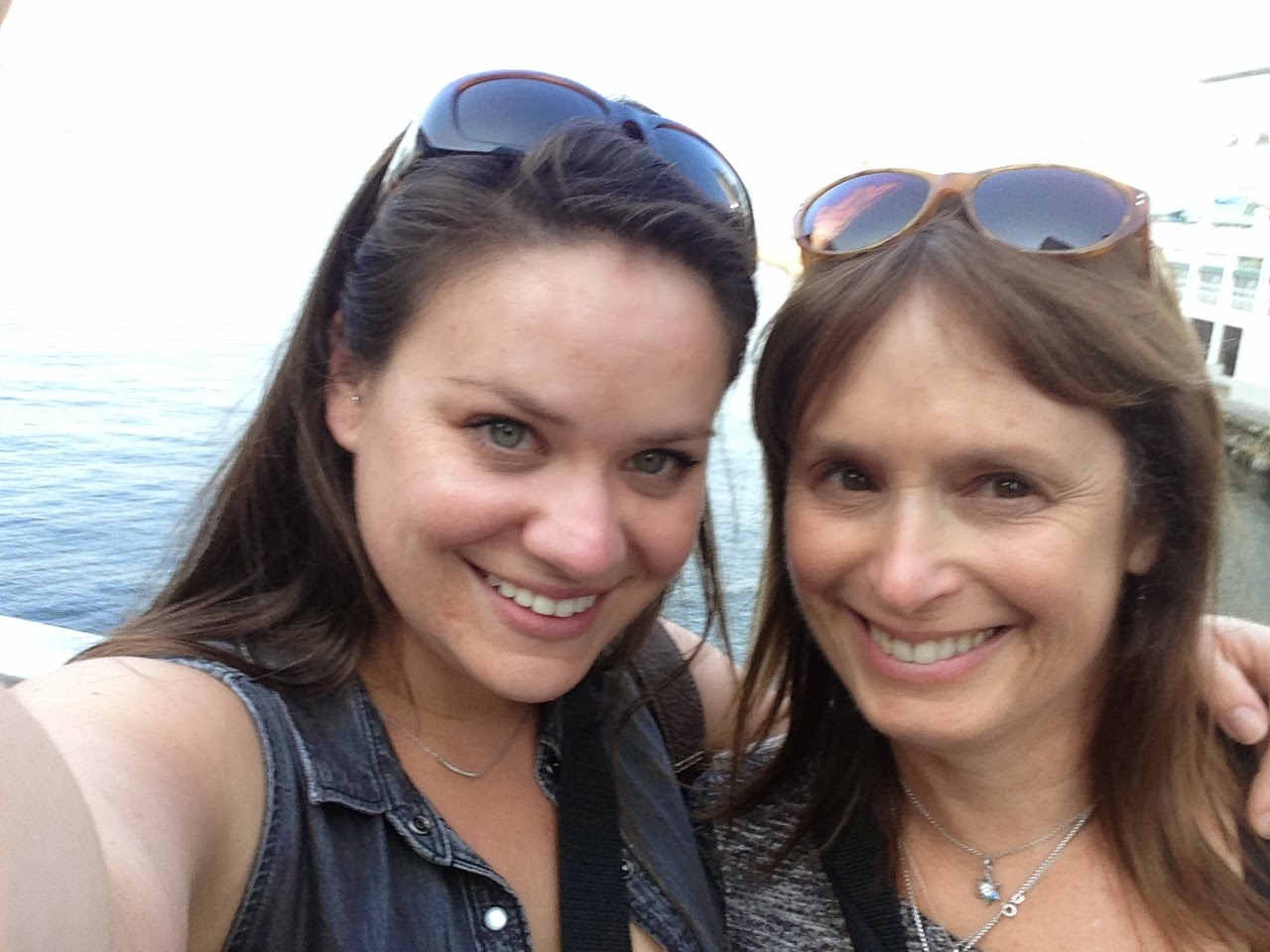My mom and I headed up to Vancouver on Friday afternoon (my mom worked a half day and I currently am studying for my boards/applying for jobs). There was a lot of traffic in the afternoon, but what else do you expect.
We checked into the Delta Suites Vancouver (which I highly suggest staying in) around 5pm and proceeded immediately to pick up our race packets. Our hotel was in walking distance to the convention center (and race start), so picking up our packet was easy. The race did not give out bibs, but instead gave us bracelets with our information on them. I like that because 1.) I am so short that the bib takes up my entire torso and 2.) the bibs are just kind of annoying, especially during a long race. The rest of the night consisted of eating a carb filled dinner (maybe a glass of wine) and going to bed early.
 |
| My Mom and I selfie |
 |
| The view of the water in Vancouver |
The next morning was pre-race ritual as normal. Woke up, had my bagel and headed down to the race.
The race was spectacular. The start was done in waves, so I started approximately 25 mins after 7am. The views were wonderful and there was plenty of water and cheering support. This race is relatively flat with a few minor hills, so if you are looking to PR, this is a good one. I did not PR (or come close). The 1st 10 miles felt great. I was keeping up a decent pace. But right at mile 10.1 my body decided to be done. I knew this was going to happen because although I did train with long runs, I did not run enough through out the week to add up my mileage. That is okay though, I still had a wonderful time. I will be doing this race again next year!
Here are some pictures during the race. Photo source: Seawheese FB page
 |
| The start of the race |
 |
 |
| Cheer stations…Probably the best one |
 |
| My mom after the race wearing the medal and the shorts you get with this race! |
 |
| Source |
One study found that the compression gear did not increase maximum jump height, but did help maintain a higher repetitive jump height compared to not wearing the compression gear. This means, the socks do not make you jump higher, but you will be able to sustain a higher jump height when jump over and over again. This study also reported that people reported lower rate of perceived exertion (RPE) when wearing compression gear than without compression gear. (Rugg)
Another study found that anaerobic and aerobic thresholds were more favorable with compression socks and that speed was significantly higher with compression socks than without. This article did not find a difference in HR or O2 max. (Kemmier)
Both articles suggested that compression socks have positive effects on venous hemodynamics, arterial perfusion, deeper tissue oxygenation and muscle oscillation (which means that you are getting better blood flow and more oxygen to your muscles and blood back to your heart), along with decreased muscle breakdown, fatigue, soreness with the use of compression socks. Both articles are not 100% sure how compression socks work, but they feel that there is a proprioceptive input (proprioception means knowing where your body is in space) to your muscles making them more efficient.
The second article stated that there was only at most a 2% difference in their findings, so if you are a high end athlete, this could make all the difference with winning gold or silver, but will only help you a little if you are just average Joe or Jane. But hey, anything to shave off a minute or two when I am running.
I think I will give these socks a try!
Does anyone use compression socks and what are your thoughts on how they work?
References:
1. Rugg S, Sternlicht E. The effects of graduated compression tights, compared with running shorts, on counter movement jump performance before and after submaximal running. Journal of Strength and Conditioning Research. 2014: 28;1067-1073.
2. Kemmier W, Stengel SV, Kockritz C, Mayhew H, Wassermann A, Jurgen Z. Effect of compression stockings on running perforance in men runners. Journal of Strength and Conditioning Research. 2009: 23(1); 101-105.
No comments:
Post a Comment